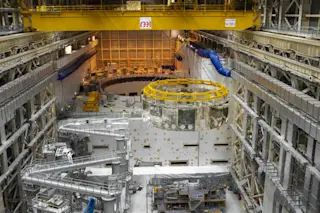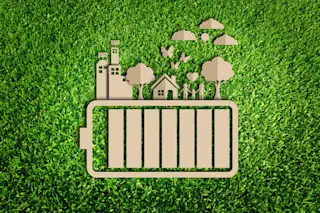Rare is the tech story whose main development is decidedly low-tech – but not impossible. Rather than a fancy atomic clock or rat cyborgs, for instance, this tech story deals with buckets of rocks and water. Well, solar panels too, but that’s not the cool new part.
Today, at a meeting of the American Physical Society, Colgate University physicist Beth Parks described a new way to wring even more energy from a solar panel — a major development for people with no access to reliable power, such as those in developing countries or folks who live off-the-grid. Rather than install the panel in a stationary position, Parks helped come up with a rotating frame that allows the panel to follow the sun as it traverses the sky.
Here’s where that high-tech equipment comes in. Rather than use motorized components, Parks’s solar panel rig moves thanks to the power of gravity, ...














